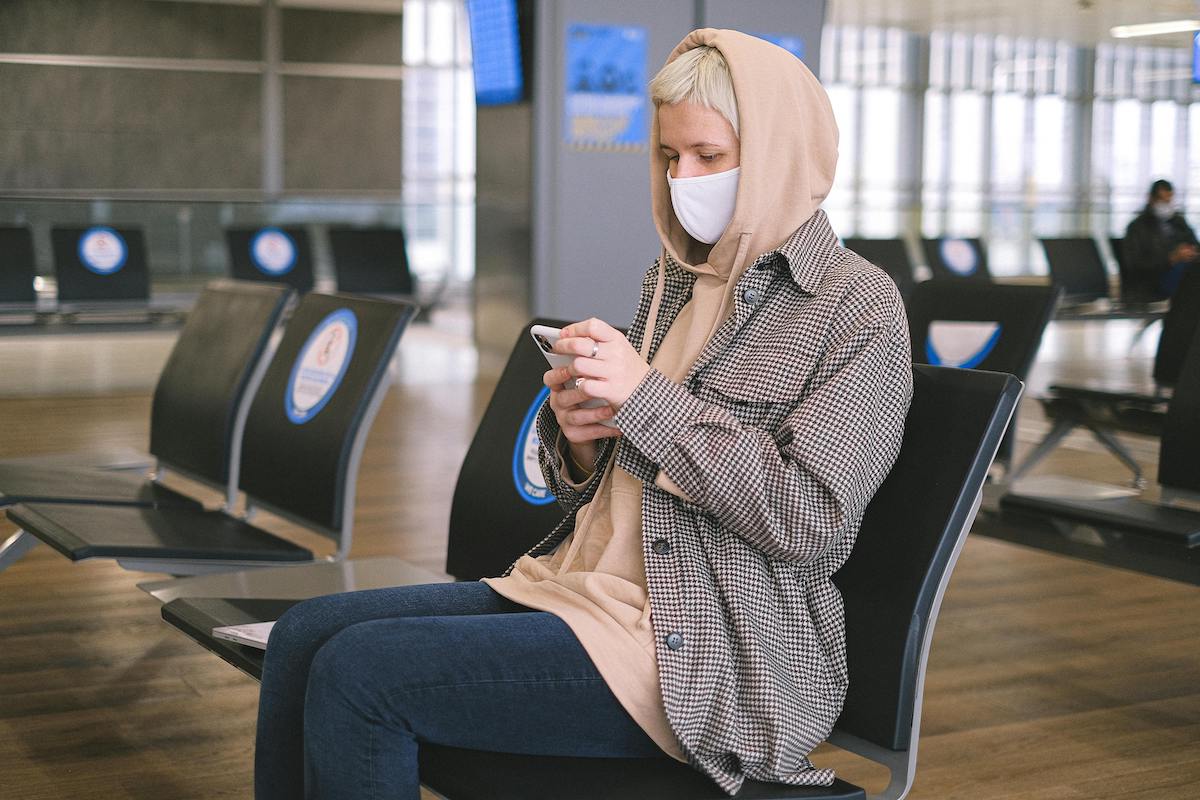It’s no fun feeling sick or worrying about various ailments while you’re traveling. Experts at Hartford HealthCare are addressing this concern locally by staffing a walk-in telehealth kiosk at Bradley International Airport in Windsor Locks, Conn. The new resource offers immediate access to clinicians for any of the 12,000 passengers who go through the airport each day, as well as airport and airline employees.
Through a partnership with telehealth company OnMed, the health system installed its kiosk, dubbed “Care on the Fly,” in the airport’s A terminal near the ticket counter for Frontier Airlines.
“This is about creating access to health care for passengers who need convenient care ‘on the go,’” Deb Hayes, chief integration officer at Hartford HealthCare, told AHCJ in an interview. “It also supports airport and airline employees who often work irregular hours and may have limited access to traditional health care.”
While health system executives believe this is the first use of telehealth services at an airport, this kiosk is an example of a trend in employing telehealth to expand access to health care in nontraditional settings. Journalists can find interesting stories by looking at other uses for this new technology, either in primary care offices to provide access to specialists, or in nonclinical settings such as pharmacies, libraries, schools, big box stores like Walmart or other locations. In 2023, Orlando Health partnered with the local tourism bureau to launch a virtual clinic at the Orange County Convention Center, offering care to meeting attendees.
How it works
To use the walk-in telehealth kiosk, patients must step inside the self-closing unit and push a button on a 65-inch screen. Then, a certified nursing or medical assistant greets the patient, fogging the kiosk’s glass to ensure privacy, and completes the intake process. This includes verifying identification and insurance, gathering vital signs and then connecting the patient to a clinician for a secure, one-on-one virtual visit.
The kiosk is outfitted with a scale, a thermal scanner for temperature checks, a blood pressure cuff, a pulse oximeter, a stethoscope and a high-definition camera, Hayes said. The unit also includes antimicrobial materials, an air purification system and a UV-C light sanitizing system that deploys after each consultation, Hayes said.
The virtual visits can address about 85% of a typical primary care visit, Hayes said. “Common patient issues that can be addressed in the care station are respiratory illnesses, allergies, headaches, heartburn and infections. Our licensed providers can check your weight, blood pressure, oxygen levels, heart rate and even run thermal scans to detect signs of infection. They can do basic exams of your eyes, ears, nose, throat, chest, skin and offer mental health screenings.”
At the end of the visits, which take about 20 minutes on average, clinicians build a treatment plan and, if needed, refer patients to a specialist or send prescriptions electronically to a patient’s pharmacy of choice (locally or at their travel destination).
“Having access to real-time care right at the airport gives passengers peace of mind,” Hayes said. “It means you don’t have to wait until you get home or scramble to find a clinic. It’s care that adjusts to your schedule, especially when you’re on the move.”
The airport kiosk is the third unit of this type operated by the health system and OnMed. The others are located at a Stop & Shop grocery store in the town of Killingly, Conn., and the Village for Families and Children, a community agency in Hartford.
“We are always looking for innovative, alternative ways to ensure affordable access to quality health care in the communities we serve,” Hayes said, noting that some patients treated at these stations have indicated that they otherwise would have gone to an emergency room.
Story angles to consider
Talk to patients who have used these services. Were they helpful? Convenient? What did they like or not like about them?
Talk to providers conducting these types of exams. How much can they detect using the tech available in the kiosks and patient interviews? How often can they diagnose something simple versus referring patients to a specialist?
Highlight other nontraditional settings used for telehealth, and ask how they are expanding access. What are the benefits and drawbacks of these setups? Look at numbers — how often are the kiosks being used?
Write a marketing/business story. Find out why particular locations are being sought out as bases for telehealth services. How are the services advertised and promoted to potential patients to know about them?
Focus on the privacy angle. What happens to the notes and images from these visits?
Resources

